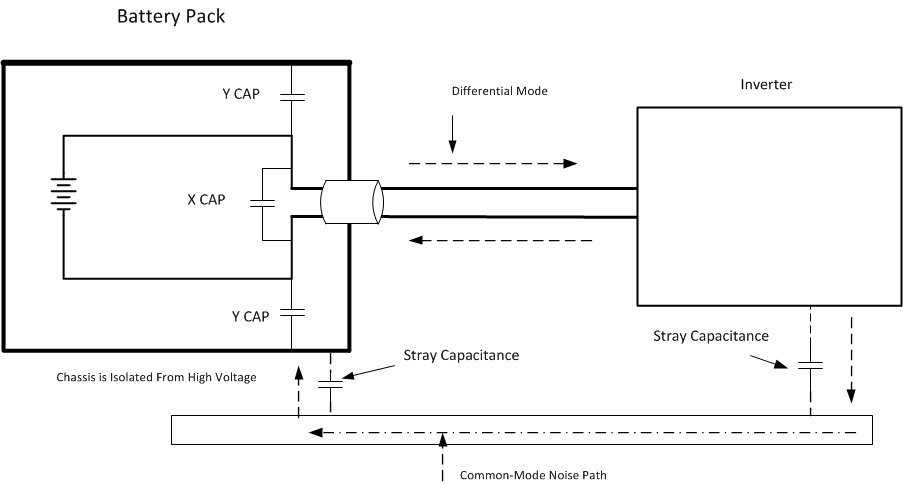SLUAA16A August 2020 – October 2023 BQ79600-Q1
3.2 Common and Differential Mode Noise
X-Y caps are commonly used and may be required for extremely noisy environments.
- Differential mode noise goes out one wire and returns back on another wire. An X capacitor is placed between two lines to suppress the noise.
- Common mode noise goes out from both wires and returns back to the chassis through stray capacitance to ground. A Y capacitor is placed between the chassis as Figure 3-2 illustrates.
 Figure 3-2 X-Y Caps
Figure 3-2 X-Y CapsDesign Considerations
- Device placement is important. The daisy-chain cable should not be resting on the busbar or metal enclosure surface.